Jasmine is a sweetly-scented flower that freshens the environment of your living area. These flowers can be used from tea to perfume. You can easily buy some affordable and ready-to bloom varieties. Jasmine is a vine plant and usually grows outside but some varieties can be grown indoors.
BEST JASMINE VARIETIES WHICH YOU CAN GROW INDOORS
The fragrance of jasmine can perfume any area where the plant is placed. If you maintain the temperature according to the type then they can grow successfully inside your home. Select a jasmine plant according to your growing zone.
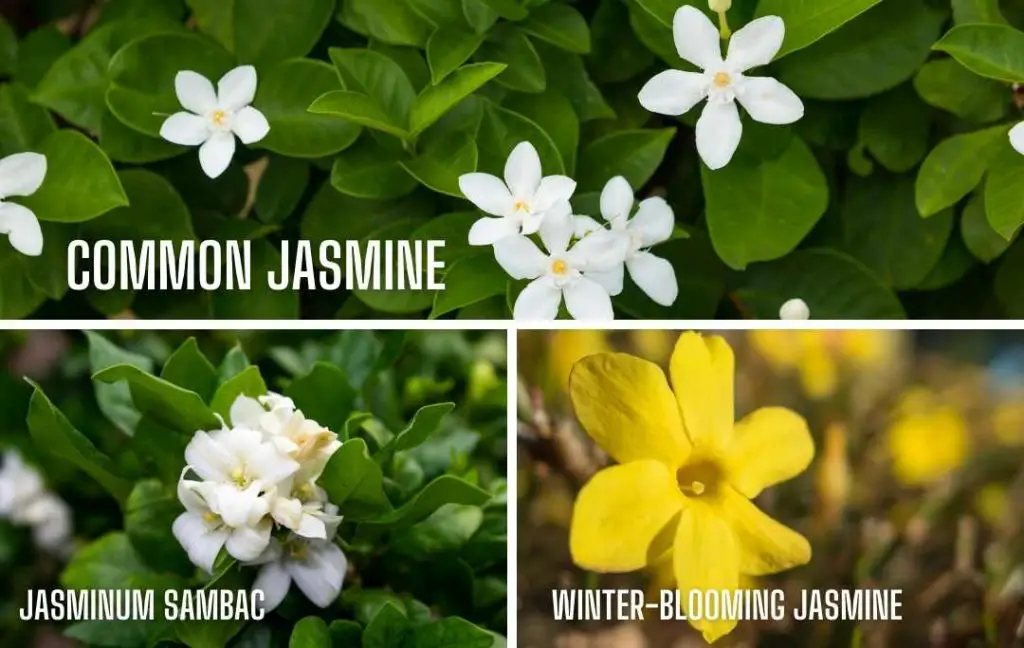
When you are growing any plant indoors then the growing zone has no significance. If you are growing plants outside in your garden then the growing zone plays an important role.
For growing plants indoors, many factors are very important which you have to manage such as sunlight intensity, water, temperature, and humidity.
The smaller varieties are Italian jasmine, showy jasmine, and promise jasmine. All the types mentioned above are 10 feet tall and have trumpet-shaped flowers with a sweet smell. Here are some varieties which thrive perfectly indoors.
COMMON JASMINE
Jasminum officinale is a common type of jasmine that can easily grow indoors. The height of this woody vine can be ten feet. This type of jasmine blooms from June to October.
JASMINUM SAMBAC
The Arabian Jasmine is a shrub but can climb if you provide support. The height of this shrub can be from 3 to 6 feet tall. This species of Jasmine is used for tea by the Chinese. This type of jasmine blooms in summer and likes hot and humid conditions.
WINTER-BLOOMING JASMINE
Jasminum polyanthum has white flowers. The addition of this species of jasmine will decorate your windowsill. The temperature which is preferred by this species is about 45-50 F in the winter.
From winter to spring this plant will give white star-shaped flowers with a strong fragrance. This plant can tolerate light frost. Your effort will not be lost when the amazing floral display enhances the beauty of your living area.
WHAT KIND OF SOIL DOES A JASMINE PLANT NEED?
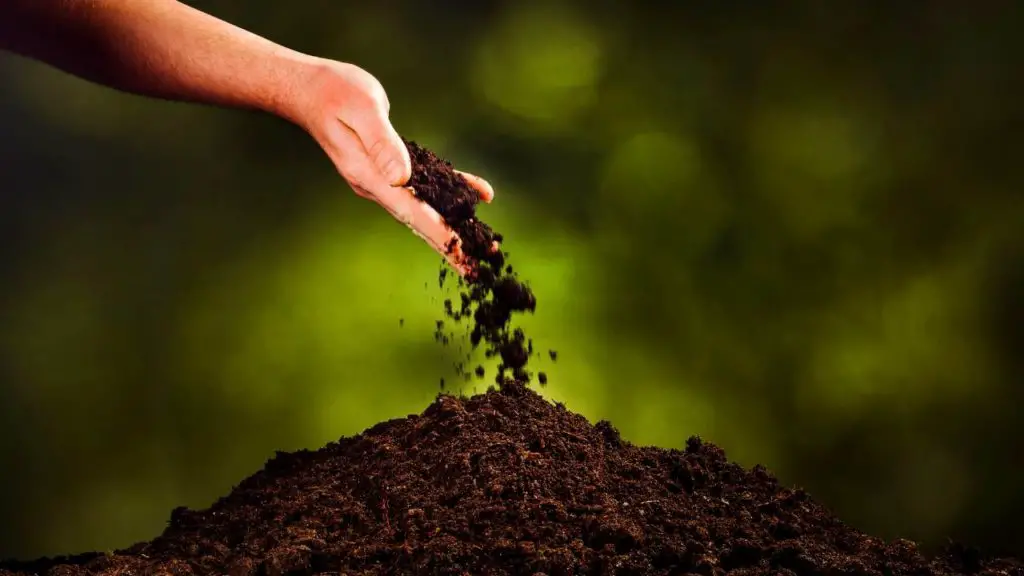
Porous and well-drained soil is needed for the healthier development of your indoor jasmine plant. The materials such as coir, bark, and other organic matter make the soil airy and light.
The other best option is a store-bought potting mix. This will work great because it has the proper proportion of vermiculite, perlite, and peat moss. This mixture of soil helps to absorb moisture and resist compaction. A stalwart potting mix is an ideal option for growing delicate and beautiful Jasmine.
HOW MUCH WATER DOES A JASMINE PLANT NEED?
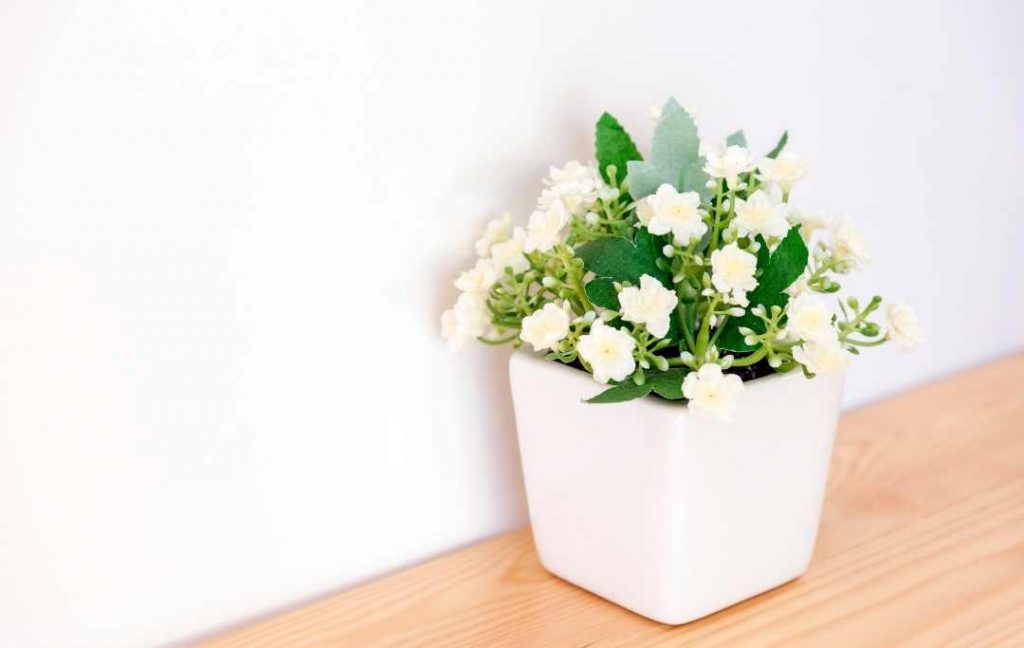
Jasmine is a low-maintenance plant. It needs little water in early spring and early winter. Overwatering will make your soil soggy so water the plants when you feel the soil is dry. You can do this with the help of your fingers.
- Water the jasmine plant once or twice a week. Water the plants so deeply so the roots get the moisture easily.
- Daily water is not necessary but whenever you water the plants, deep water reaches the roots and makes your plant perfectly hydrated.
- If you have a busy routine then you can use a self-watering planter to maintain the moisture of the soil for your Jasmine plant.
In summer and at blooming time your plants need more water. Keep the soil moist. Remember, your plants need less water in the fall. For indoor plants, in the winter season due to heat production from wood-burning stoves will create a dry environment. Keep an eye on the soil so it will not dry.
You can also run a humidifier near your jasmine plant. At least 50% of humidity is needed by jasmine plants. At lower humidity, the roots of the water are not able to tolerate the water lost due to dry weather.
HOW MUCH SUN DOES A JASMINE PLANT NEED?
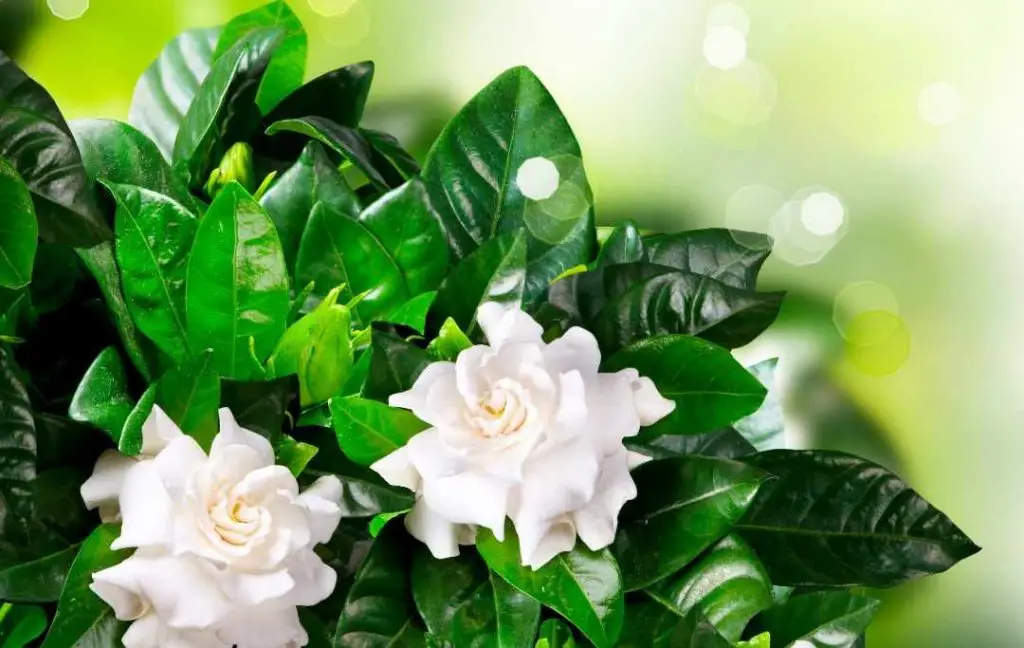
Light is an important factor for the growth of the delicate Jasmine plant. The location should be well-lighted where you place your Jasmine pot.
Make sure your plants get at least 4 hours of direct sunlight. If your plants are getting too much light then close the blinds of the window. You can also change the location of the plants according to regular e needs them.
- The southern-facing window is the best place for improving the growth of your Jasmine plant because it receives regular sunlight.
- If your plants are getting too much sunlight then the leaves will start dropping off. It is a clear sign that your plants are receiving too much sun. The solution to this problem is to move plants as soon as possible to other locations.
- When you grow plants indoors then dust is accumulated on the leaves of the plants every few months. Clean the leaves so they can absorb the sunlight to thrive.
PLANTING AND PROPAGATION OF JASMINE AS HOUSEPLANT
A sunny spot for your Jasmine plant will encourage robust growth. As you are growing Jasmine indoors so you can’t maintain full sun to the plants. But you can place the plants near a south-facing window.
If you arrange a trellis for support then it will work awesome. Indoor temperature for growing Jasmine plants should be 60 to 75 degrees Fahrenheit, make sure your plants get well-circulated air.
PLANTING OF JASMINE FROM SEEDS
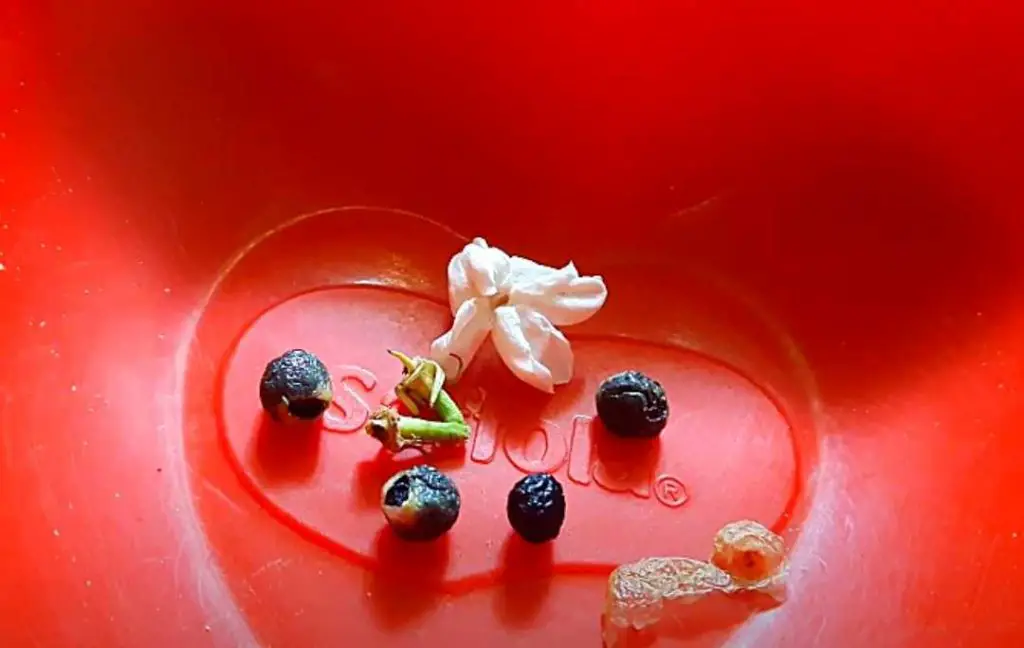
STEP 1
The first step is getting seeds of your desired variety. You can buy seeds from any local nursery or gardening store. You can also buy online or ask any friend for some seed pods.
STEP 2
Soak the seeds in warm water for the full night so they can germinate fast. Use a seed mix and plant the seeds in it. Cover the seeds with a light layer of soil. Now your seeds need water for the germination process. The germination time for jasmine seeds can be one month depending on the variety.
STEP 3
When the seedlings of the jasmine will reach the height of 3 inches then you can transplant it in the planter or 1-gallon flower pot.
PROPAGATION OF JASMINE FROM CUTTINGS
Here we will explain all the steps for propagating jasmine plants.
STEP1
The question is how to propagate jasmine plants indoors. The answer is very simple; you can use cuttings for this purpose. The length of the cuttings must be 3-4 inches. Remove all the leaves at the bottom of the cuttings and leave two sets of leaves at the top.
STEP 2
The next step is placing the cuttings in the mixture of the soil which you prepare in a starter pot. Make sure the soil is well-drained and nutrient-dense.
You can cover the cuttings with a plastic tent or plastic wrap. It will help to retain the moisture in the soil and encourage growth. The temperature of the room must be 60-65°F or 15.5 to 18°C.
STEP 3
After four weeks, you will see the roots emerging from the cuttings. Remove the plastic wrap from the cutting and let the plant grow in the starter. When the roots will fill the small pot then you can grow them in the desired large pot.
Also Read
HOW DO YOU FERTILIZE JASMINE?
You can use several ways to fertilize your Jasmine plants. Dilute houseplant food is a good option that you can use throughout the growing season, the other option is a fertilizer with high phosphorus.
Organic fertilizer is a great option because it has all the basic nutrients for the plants which are essential. Avoid using strong fertilizer because it can be harmful to jasmine plants.
In major growing seasons like spring and early fall, jasmine plants should be fertilized every 2 to 4 weeks. Remember don’t fertilize your Jasmine plant in late fall and winter as it will harm your plant.
Make sure, the fertilizer that you are using for your Jasmine plant is designed for indoor plants. If you are using water-soluble fertilizer then make only 50% of the rate according to the suggestion of the manufacturer.
If you apply fertilizer at full strength then the results of this application are very harmful. When you use any fertilizer, all the instructions and information are given in the packet.
This will be very helpful during the use. You should use the fertilizer according to the instructions so it will not damage your plants.
You can also add organic matter such as compost. You can easily make compost at home, the other option of ready-made compost is also there.
The container or pot in which you are growing has at least 20 percent of organic matter. This will help to introduce essential microorganisms and micronutrients.
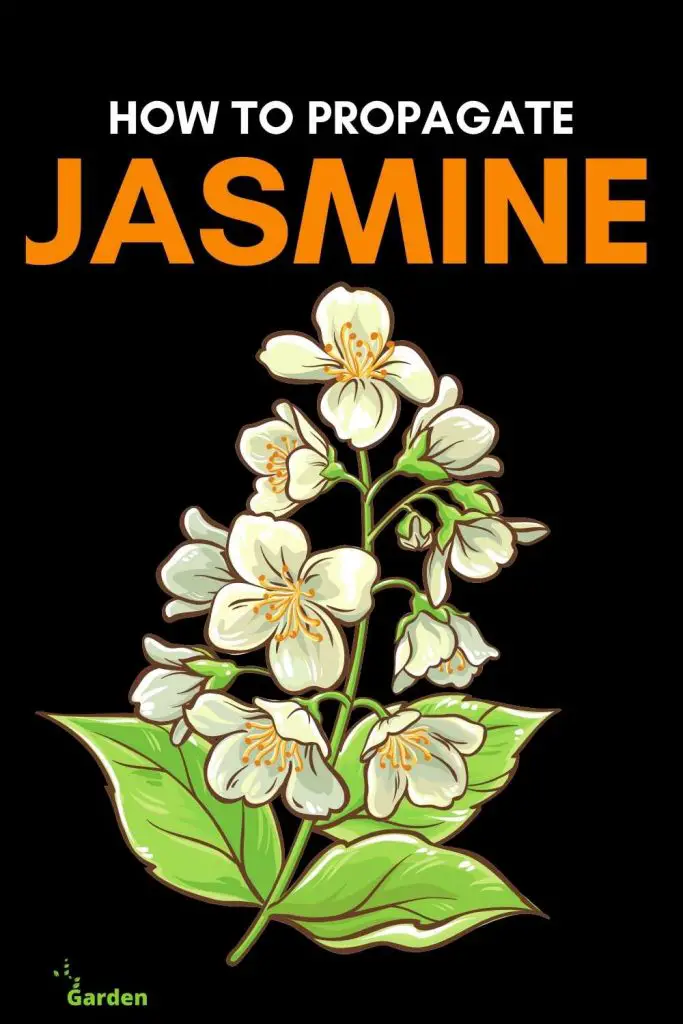
PESTS AND DISEASES
- Common jasmine is a variety that is free from pests and disease.
- Spider mites are a big problem for winter Jasmine. Discard the infected plant so other plants will not be affected.
- If you see yellow leaves on your plant then it means your plant needs fertilizer. Remember, you should apply fertilizer in the spring so you will get a fragrant bloom.
- Whit and cottony masses are found under the leaves and on the stems, they are called mealybugs. If you want to remove them then use a cotton swab dipped in the alcohol.
PRUNING
The size of the jasmine plant can be controlled by pruning. The plant will set in a desirable size after pruning. During pruning, you can remove dead and tangled pieces of plants.
Keep in mind that don’t remove more than one-third of the plant at one time. Pruning makes it possible to grow your jasmine plants in a specific direction.
Buy best sharp pruner on Amazon
HARVESTING JASMINE
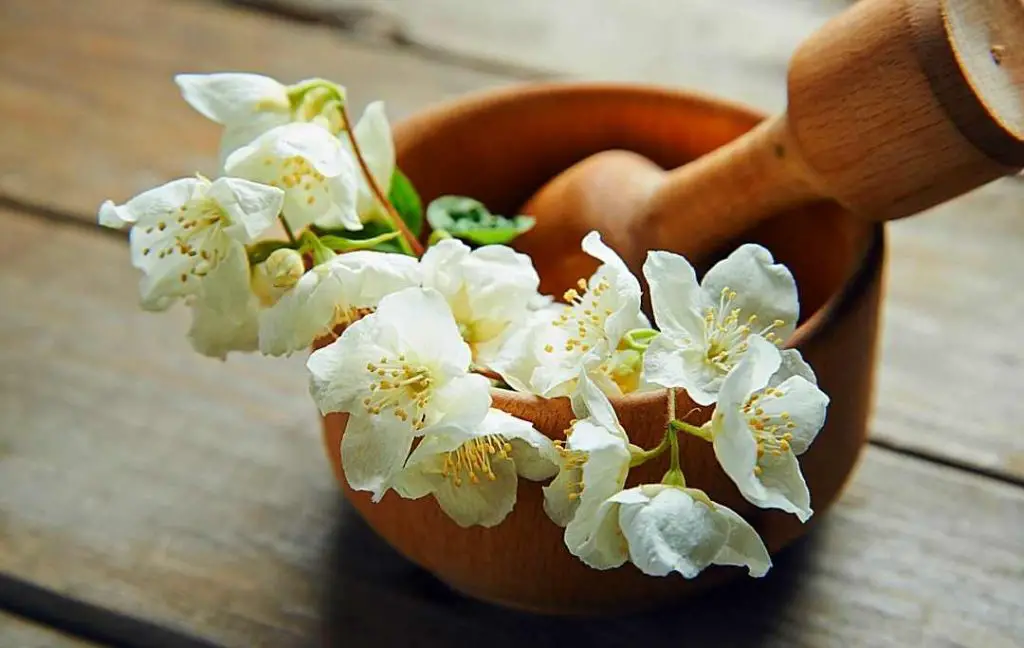
Most people use jasmine for making tea. When you see a jasmine plant is open then pick the flowers. Place the flowers in a cool and dry location in the air. The fresh air will make them dry slowly.
After drying these petals can be used for making tea or you can infuse them into syrups, drinks, or more. Before picking the flowers for edible purposes, make sure the plant is pesticides and herbicides free.
